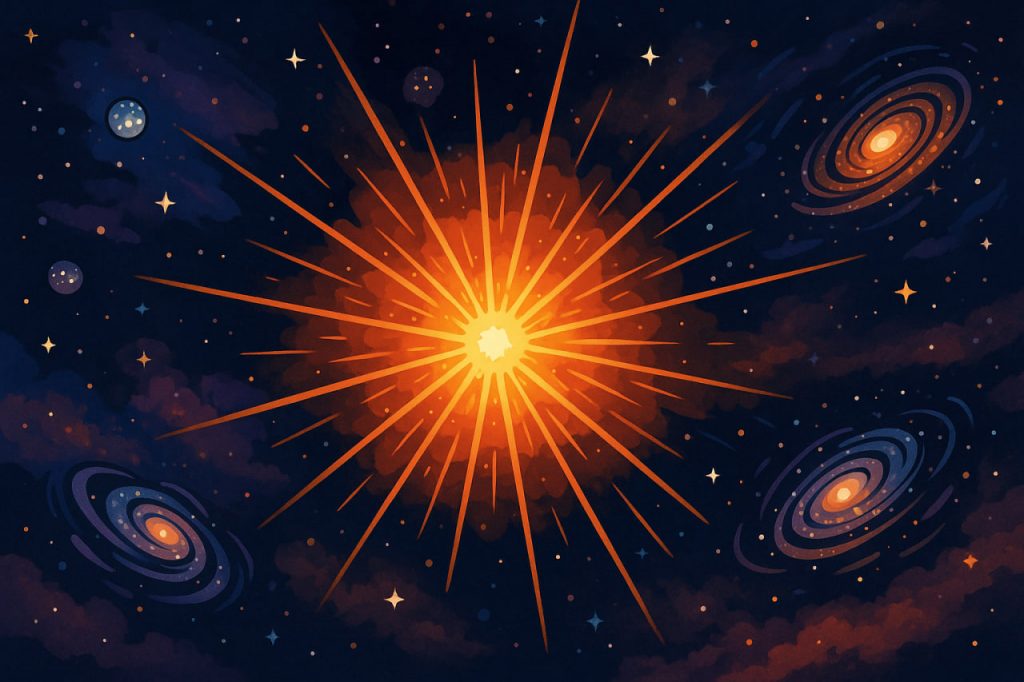The Big Bang Theory is the leading scientific explanation for the origin and evolution of the universe. According to this theory, the universe began approximately 13.8 billion years ago from a state of extremely high density and temperature. Rather than an explosion in space, the Big Bang was the sudden expansion of space itself, marking the beginning of time, space, matter, and energy.
This concept forms the foundation of modern cosmology and is supported by decades of astronomical observations and theoretical physics.
The First Moments of the Universe
In the earliest fractions of a second, the universe expanded faster than the speed of light in an event known as cosmic inflation. During this phase:
- Space expanded rapidly.
- Temperatures were incredibly high.
- Fundamental forces (gravity, electromagnetism, nuclear forces) began to separate.
After about one second, particles like protons, neutrons, and electrons formed. In the next few minutes, these particles combined to create the first atomic nuclei in a process called Big Bang nucleosynthesis.
Formation of Galaxies, Stars, and Planets
It took around 380,000 years for the universe to cool enough for atoms to form. Once atoms emerged, light could finally travel freely, creating what we now observe as the Cosmic Microwave Background (CMB) — faint radiation that fills the universe and offers a “snapshot” of its infancy.
Over billions of years:
- Gravity pulled matter together to form stars and galaxies.
- Stars forged heavier elements in their cores.
- Supernovae spread these elements across space, eventually forming planets and solar systems like our own.
Evidence Supporting the Big Bang
The Big Bang Theory is supported by multiple lines of observational evidence:
- Cosmic Microwave Background Radiation — the afterglow of the early universe.
- Redshift of Galaxies — galaxies are moving away from us, indicating the universe is still expanding.
- Abundance of Light Elements — such as hydrogen, helium, and lithium, matches theoretical predictions.
- Large-Scale Structure — the distribution of galaxies supports models based on the Big Bang.
Misconceptions About the Big Bang
- It wasn’t an explosion in space — it was an expansion of space itself.
- There was no “outside” of the Big Bang — space and time began together.
- The Big Bang doesn’t explain what caused it — the theory describes what happened after time began, not what came “before.”
Unanswered Questions and Theories
While the Big Bang Theory explains much, it also raises deep questions:
- What triggered the Big Bang?
- What existed before it (if anything)?
- Is the universe finite or infinite?
- Will it continue expanding forever?
Scientists explore these questions using advanced physics, such as quantum gravity, string theory, and models of multiverses.
Glossary
- Big Bang — the theoretical origin of the universe from an extremely dense and hot state.
- Cosmic Inflation — a rapid expansion of space in the first moments after the Big Bang.
- Cosmic Microwave Background (CMB) — radiation left over from the early universe, observable today.
- Redshift — the lengthening of light waves from distant galaxies, indicating their movement away from us.
- Nucleosynthesis — the process by which atomic nuclei are formed, particularly in the early universe or in stars.


